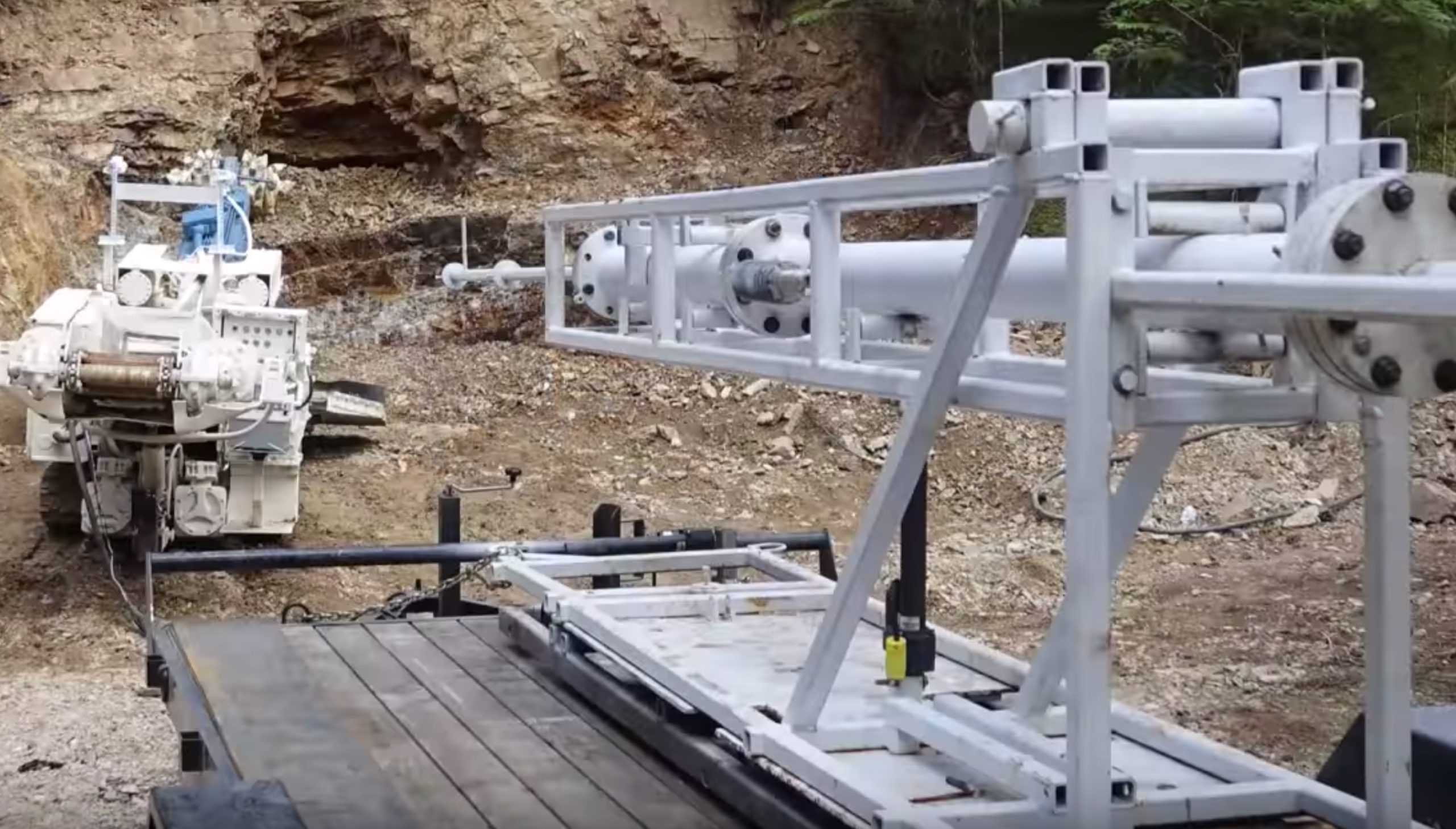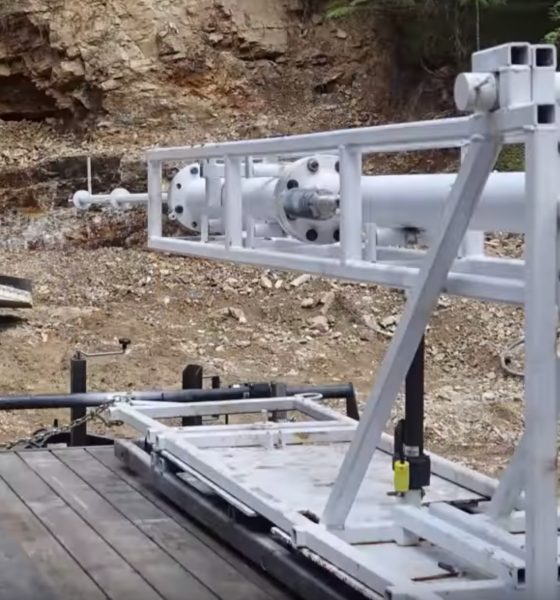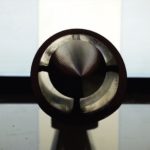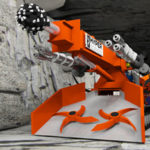

Lifestyle
HyperSciences’ drilling tech can expedite Elon Musk’s tunneling revolution
During The Boring Company’s information session earlier this year, Elon Musk remarked that the company’s next-generation Tunnel Boring Machine, which is electric-powered and completely designed in-house, would likely be 10-15x faster than conventional TBMs. With such a machine in its repertoire, The Boring Co. is poised to complete high-profile projects like the Chicago-O’Hare transport system in record time.
While The Boring Company is poised to revolutionize the tunneling industry, Elon Musk’s tunneling startup has the potential to push the envelope even further if it explores other disruptive technologies. Take, for example, the tunneling solutions being developed by startups like HyperSciences.
HyperSciences is a company that uses rocket science to disrupt several sectors, including tunneling and renewable energy. The company was founded by actual rocket scientist Mark Russell, whose tenure in the field involves work with companies like Boeing and Kistler Aerospace. Russell also worked for Jeff Bezos’ private space firm, Blue Origin, where he led the design and development of the company’s crew capsule, as well as its takeoff and landing vehicle. Even before starting HyperSciences, the rocket scientist already had a passion for tunnels and digging, thanks in part to his family’s long history in the mining industry.
At the heart of the startup is a rather simple and straightforward device called the HyperCore — a low-cost, multi-purpose projectile that can accelerate to velocities over Mach 5. The HyperCore is fired into the earth through an AI-guided system, and due to the projectile’s speed, firing it results in a meteor-like impact that immediately breaks and pulverizes hard rock. With rocks crushed, boring machines can progress much faster, expediting the timelines of tunneling projects.
- Hypersciences drilling technology
- HyperSciences’ tunnel boring machine.
HyperSciences’ own boring machine, dubbed as the Hyper Tunnel Boring and Mining System (HTBM), is far quicker than traditional TBMs. Whereas conventional TBMs are capable of digging around 300 feet per week, HyperSciences estimates that its HTBM system could dig a mile-long tunnel in seven days. The HTBM would accomplish this by firing the HyperCore, sending LIDAR down the hole, determining the best next spot to fire, and firing another shot. This process allows the tunneling machine to operate smoothly almost without obstruction.
What is particularly notable about the HyperCore is that it is compatible with existing equipment such as excavators and other low profile tracked machines. This means that even tunneling firms such as The Boring Company could utilize the ultra-high-speed projectile to expedite its digging operations. This would, of course, require a notable amount of work from HyperSciences and the companies it would partner with, but the benefits of faster turnaround times for tunneling projects would likely be well worth it.
HyperSciences continues to raise funds to help continue the development of its technology. The company is crowdsourcing it’s latest investment round, allowing everyday investors to get on board towards HyperSciences’ journey as a plausible disruptor of multiple industries. With such a clever and straightforward application of its technology, there is little doubt that the potential of HyperSciences is massive.
The tunneling industry has not really evolved much over the past decades. Prior to the arrival of The Boring Company, tunneling is perceived as an expensive, slow, and arduous endeavor. With the advent of the Boring Company, tunneling has started a transition towards a new era of faster, smaller, and more strategic tunnels. With HyperCore’s technology, tunneling projects would likely be able to shake off their reputation of being a tedious and expensive affair.
Read more about HyperSciences’ work and concepts here.

Lifestyle
Tesla Model S Plaid battles China’s 1500 hp monster Nurburgring monster, with surprising results
There is just something about Tesla’s tuning and refinement that makes raw specs seem not as game-changing.

The Tesla Model S Plaid has been around for some time. Today, it is no longer the world’s quickest four-door electric sedan, nor is it the most powerful. As per a recent video from motoring YouTube channel Carwow, however, it seems like the Model S Plaid is still more than a match for some of its newer and more powerful rivals.
The monster from China
The Xiaomi SU7 Ultra is nothing short of a monster. Just like the Model S Plaid, it features three motors. It also has 1,548 hp and 1,770 Nm of torque. It’s All Wheel Drive and weighs a hefty 2,360 kg. The vehicle, which costs just about the equivalent of £55,000, has been recorded setting an insane 7:04.957 at the Nurburgring, surpassing the previous record held by the Porsche Taycan Turbo GT.
For all intents and purposes, the Model S Plaid looked outgunned in Carwow’s test. The Model S Plaid is no slouch with its three motors that produce 1,020 hp and 1,420 Nm of torque. It’s also a bit lighter at 2,190 kg despite its larger size. However, as the Carwow host pointed out, the Model S Plaid holds a 7:25.231 record in the Nurburgring. Compared to the Xiaomi SU7 Ultra’s record, the Model S Plaid’s lap time is notably slower.
Real-world tests
As could be seen in Carwow’s drag races, however, Tesla’s tech wizardry with the Model S Plaid is still hard to beat. The two vehicles competed in nine races, and the older Model S Plaid actually beat its newer, more powerful counterpart from China several times. At one point in the race, the Xiaomi SU7 Ultra hit its power limit due to its battery’s temperature, but the Model S Plaid was still going strong.
The Model S Plaid was first teased five years ago, in September 2020 during Tesla’s Battery Day. Since then, cars like the Lucid Air Sapphire and the Xiaomi SU7 Ultra have been released, surpassing its specs. But just like the Model Y ended up being the better all-rounder compared to the BYD Sealion 7 and the MG IM6, there is just something about Tesla’s tuning and refinement that makes raw specs seem not as game-changing.
Check out Carwow’s Model S Plaid vs Xiaomi SU7 drag race video below.
Lifestyle
500-mile test proves why Tesla Model Y still humiliates rivals in Europe
On paper, the BYD Sealion 7 and MG IM6 promised standout capabilities against the Model Y.

BYD is seeing a lot of momentum in Europe, so much so that mainstream media has taken every opportunity to argue that the Chinese automaker has beaten Tesla in the region. But while BYD sales this year in Europe are rising and Tesla’s registrations remain challenged, the raw capabilities of vehicles like the Model Y are difficult to deny.
This was highlighted in a 500-mile challenge by What Car? magazine, which showed that the new Tesla Model Y is more efficient, cheaper to run, and more reliable than rivals like the BYD Sealion 7, and even the nearly 400 KW-charging MG IM6.
Range and charging promises
On paper, the BYD Sealion 7 and MG IM6 promised standout capabilities against the Model Y. The Sealion 7 had more estimated range and the IM6 promised significantly faster charging. When faced with real-world conditions, however, it was still the Model Y that proved superior.
During the 500-mile test, the BYD nearly failed to reach a charging stop, arriving with less range than its display projected, as noted in a CarUp report. MG fared better, but its charging speeds never reached its promised nearly-400 kW charging speed. Tesla’s Model Y, by comparison, managed energy calculations precisely and arrived at each stop without issue.
Tesla leads in areas that matter
Charging times from 25% to 80% showed that the MG was the fastest at 17 minutes, while Tesla and BYD were close at 28 and 29 minutes, respectively. Overall efficiency and cost told a different story, however. The Model Y consumed 19.4 kWh per 100 km, compared to 22.2 for MG and 23.9 for BYD. Over the full trip, Tesla’s charging costs totaled just £82 thanks to its supercharger network, far below BYD’s £130 and MG’s £119.
What Car? Magazine’s testers concluded that despite BYD’s rapid sales growth and the MG IM6’s seriously impressive charging speeds, Tesla remains the more compelling real-world choice. The Model Y just offers stability, efficiency, and a proven charging infrastructure through its Supercharging network. And as per the magazine’s hosts, the Model Y is even the cheapest car to own among the three that were tested.
Watch What Car? Magazine’s 500-mile test in the video below.
Lifestyle
Tesla Cybertruck slapped with world’s least intimidating ticket, and it’s pure cringe
One cannot help but cringe and feel second-hand embarrassment at the idea of a person just driving around with a stack of these babies.

A Cybertruck parked at Stanford Shopping Center in California was recently hit with what might be the most try-hard piece of paper ever slipped under a wiper blade: a “fake citation” accusing the driver of supporting a “fascist car.”
The note, shared on X by Tesla staff program manager Ryan Torres, quickly made the rounds on X, where it quickly gained attention as an example of how not to protest.
The world’s least intimidating ticket
According to the citation, the supposed “violation” was “driving a fascist car.” The remedial action? Take the bus, call an Uber, or ride a bike. The note also dubbed Elon Musk a “chainsaw-wielding Nazi billionaire.” Now, protests against Tesla and Elon Musk have become commonplace this year, but one cannot help but cringe and feel second-hand embarrassment at the idea of a person just driving around with a stack of fake anti-Tesla/Musk citations.
Torres pointed out the irony himself in his post on X. Tesla currently employs over 140,000 Americans, and SpaceX has put the U.S. firmly back at the top of space technology. As Torres put it, maybe the person behind the world’s least intimidating ticket should “read a book on innovation before vandalizing” other people’s property.
Peak performative clownery
Not to mention that the fake ticket’s logic collapses under its own weight. EVs like the Cybertruck are literally designed to reduce emissions, not “destroy the economy.” If anything, Tesla has bolstered the United States’ economy by fueling jobs in engineering, manufacturing, and clean energy. It’s not the first time a Tesla has been the target of vandalism or politically charged notes, but this one stands out for sheer cringe value.
Torres summed it up neatly: “Peak clownery.” On that point, at least, the citation earns full marks. In a way, though, perhaps cringe fake tickets are not as bad as the literal firebombs that were being thrown at Tesla stores and cars earlier this year because some critics were gleefully misinformed about Elon Musk.










